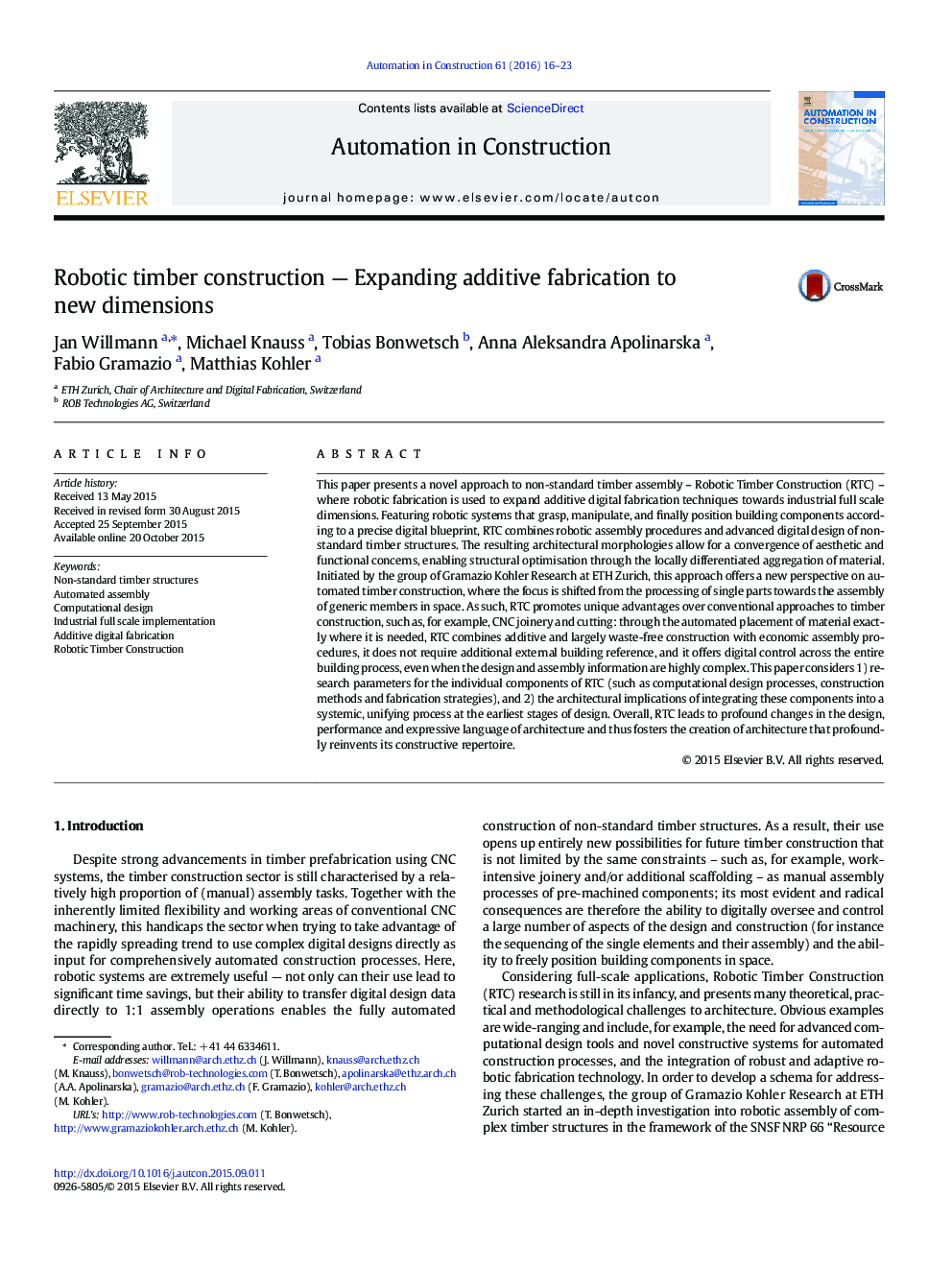| کد مقاله | کد نشریه | سال انتشار | مقاله انگلیسی | نسخه تمام متن |
|---|---|---|---|---|
| 246243 | 502355 | 2016 | 8 صفحه PDF | دانلود رایگان |
• An overview is given on additive digital fabrication of nonstandard timber structures.
• The focus is set on Robotic Timber Construction (RTC), which integrates advanced computational design and automated assembly into a systemic, unifying system.
• Of particular concern are experimental setup and research parameters and procedures.
• Experimental prototype results are discussed.
• The industrial implementation is described.
This paper presents a novel approach to non-standard timber assembly – Robotic Timber Construction (RTC) – where robotic fabrication is used to expand additive digital fabrication techniques towards industrial full scale dimensions. Featuring robotic systems that grasp, manipulate, and finally position building components according to a precise digital blueprint, RTC combines robotic assembly procedures and advanced digital design of non-standard timber structures. The resulting architectural morphologies allow for a convergence of aesthetic and functional concerns, enabling structural optimisation through the locally differentiated aggregation of material. Initiated by the group of Gramazio Kohler Research at ETH Zurich, this approach offers a new perspective on automated timber construction, where the focus is shifted from the processing of single parts towards the assembly of generic members in space. As such, RTC promotes unique advantages over conventional approaches to timber construction, such as, for example, CNC joinery and cutting: through the automated placement of material exactly where it is needed, RTC combines additive and largely waste-free construction with economic assembly procedures, it does not require additional external building reference, and it offers digital control across the entire building process, even when the design and assembly information are highly complex. This paper considers 1) research parameters for the individual components of RTC (such as computational design processes, construction methods and fabrication strategies), and 2) the architectural implications of integrating these components into a systemic, unifying process at the earliest stages of design. Overall, RTC leads to profound changes in the design, performance and expressive language of architecture and thus fosters the creation of architecture that profoundly reinvents its constructive repertoire.
Journal: Automation in Construction - Volume 61, January 2016, Pages 16–23
